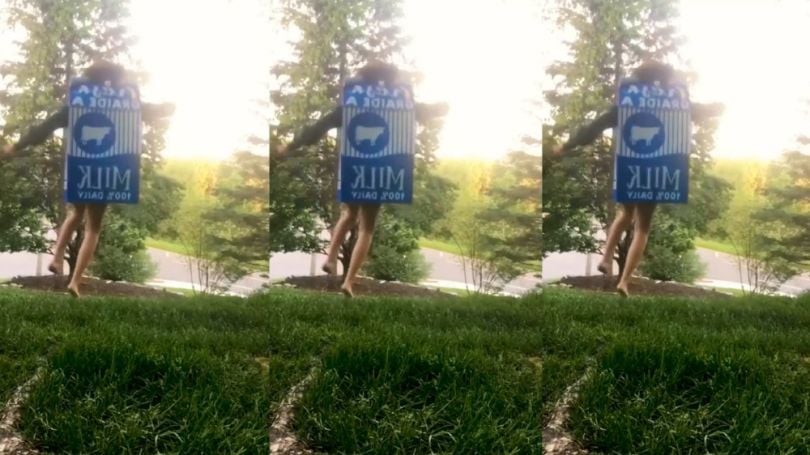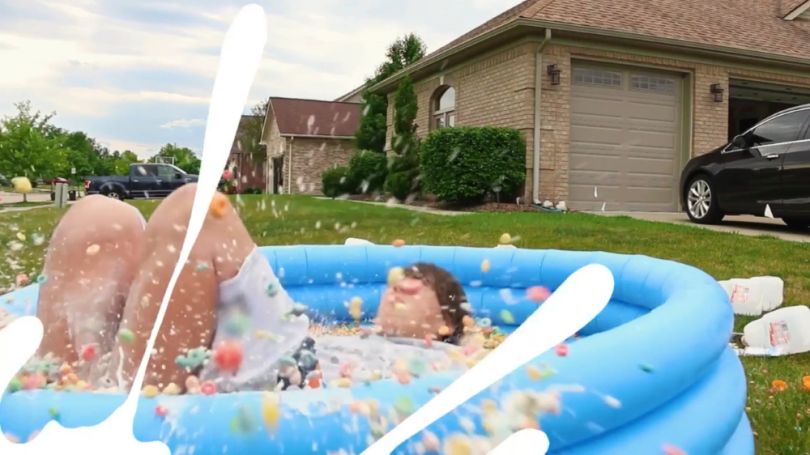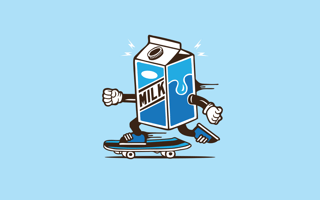In early August, Katie Ledecky, the American swimmer and five-time Olympic gold medalist, paddled the length of a pool while balancing a glass of chocolate milk on her head.
The feat was captured on video and uploaded to TikTok, where users viewed it more than three million times. In the video, Ledecky called on others to share clips of themselves steadying a glass of milk while performing similarly impressive stunts, and to use the hashtag #GotMilkChallenge.
The challenge caught on. Since that first upload, videos tagged with #GotMilkChallenge have been collectively viewed more than four billion times on TikTok, the user base of which is 60 percent Gen Z.
“Teens are sort of our creative bullseye.”
The viral campaign was launched by the Milk Processors Education Program (MilkPEP), the marketing arm of America’s milk industry. It marked the return of the iconic “got milk?” slogan, which MilkPEP sidelined a half-decade ago. And, perhaps more than that, it revealed MilkPEP’s commitment to win the affection of Gen Z.
“Teens are sort of our creative bullseye,” Miranda Abney, senior director of marketing at MilkPEP, told Built In. “We see them as this very powerful cultural force.”
While the attention of the younger generation is prized by advertisers, it’s intensely difficult to capture. But milk is determined.

Why Target Teens?
Parents largely remain the gatekeepers of the grocery list, the ones most often responsible for bringing gallons of milk into the home. For that reason, MilkPEP still markets to them, using in-store media and, more recently, partnering with e-commerce giants like Amazon Fresh and Instacart to emphasize that milk is fresh, even when it’s delivered.
Even so, the organization’s sights are primarily set on teens. The reason: Teens, perhaps surprisingly, hold lots of sway on the purchasing decisions of their households — especially when it comes to food and beverages.
A 2019 report from the National Retail Federation revealed that 87 percent of parents surveyed said their children influence what they buy. And it showed that food and drink ranks third among categories in which teens influence household spending, or spend their own money — ahead of dining out, events and outings, and books and music.
“It’s crazy how powerful they are,” Abney said of kids today. They are a “force within their own families.”
Abney figures this phenomenon has only grown stronger during the pandemic. She wondered aloud if it had something to do with parents feeling bad for their children, many of whom have had a difficult school year involving virtual classrooms.
Whatever the reason, it seems that, when kids request milk, their parents are often happy to oblige.

Standing Out From the Crowd
Teens today have lots of options.
In its heyday, milk’s rivals included water, coffee, soda and juice. Now it also competes with sports drinks, energy drinks, seltzer and kombucha. Say nothing of alternative milks, such as oat milk, almond milk and soy milk, all of which continue to climb in popularity — even as dairy milk consumption wanes.
To recapture mind-share, MilkPEP has resurrected the “got milk?” slogan it shelved in 2014, after a two-decade run that started when MilkPEP licensed the tagline from the California Milk Processor Board in the mid-1990s to bring it to the national stage.
The organization had moved away from the iconic campaign, with ads featuring A-list celebrities wearing white milk mustaches, because it had become ubiquitous and overplayed — like “wallpaper,” Abney said.
But last March, as the pandemic sent shoppers scrambling for household staples and comfort food — boosting milk sales for the first time in years — an opportunity presented itself.
The MilkPEP team noticed shoppers prioritizing kitchen essentials — they were going out and getting milk. So, MilkPEP figured it might as well seize the moment, and ask the question once again: “got milk?”
MilkPEP scrapped its marketing calendar and worked to get the new “got milk?” campaign up and running by summer. Instead of print ads full of celebrities, though, the campaign relied on digital-first ads featuring mostly user-generated content. It was less of a nostalgia play for parents who might remember the slogan from the 1990s, and more of an appeal to today’s creative youth.
“We haven’t really talked to teens for some time,” Abney said, “and now we’ve really come back to them.”

‘How Do You Do, Fellow Kids?’
MilkPEP had run a commercial during the Nickelodeon Kids’ Choice Awards earlier in the year. And the push into TikTok has made even clearer its intentions to capture Gen Z.
TikTok can be effective for top-of-funnel marketing: Challenges and memes routinely swell into overnight sensations, driving brand awareness into the farthest corners of popular culture — even if the product was once perceived as plain (see: Ocean Spray).
Countless grocery and retail brands have flocked to the platform, trying to build rapport with the younger demographics dwelling there. Familiar faces include Kroger, Chipotle, Dunkin’ and Sabra Hummus.
Milk has joined them, and it’s using a mix of celebrity endorsers, paid social influencers and organic user-generated content to whip up excitement around milk.
What MilkPEP quickly learned is that breaking through on new, teen-friendly social platforms like TikTok isn’t as simple as reformatting its existing messaging. Indeed, to reach Gen Z, it had to rethink the substance of its content. It couldn’t rely on milk’s old playbook.
“Do we need to tell people what milk is gonna do for them?”
For years, that playbook focused on talking up the functional benefits of milk. Milk ads targeting boys often mentioned how it could help them reach their optimal height, and the ones for girls frequently associated the drink with nice smiles and skin. And many milk ads showcased athletes of all ages using it as a recovery drink.
But after poring over new consumer research and running focus groups, MilkPEP learned that kids today seem to care less about what milk supposedly does for their bodies. They don’t want to be talked at; they want to be inspired.
“I think where we have gotten to now is a bit more of an emotional connection, versus that functional connection,” Abney said.
Focus groups that watched milk ads absent any nutritional or functional information about milk, but that were fun and sparked emotion, were a hit, Abney said.
She remembers wondering: “Do we need to tell people what milk is gonna do for them? Do [we] need to spell it out for them? And what we found was, no way.”
So for its “got milk?” campaign, MilkPEP produced UGC-heavy ads featuring everyday people dancing with milk, building milk carton forts, and even cannonballing into a kiddy pool full of cereal and milk. Nothing about protein or Vitamin D.
Is it working? Abney thinks so. But MilkPEP’s not resting on its laurels.
“It’s definitely a moving target,” Abney said of the young generation that milk is trying to reach. “[We] just have to be on top of it.”




